Momentum indicators are essential for enhancing trading strategies by gauging price movement strength, identifying trend reversals, and refining entry/exit points. Key indicators like RSI, MACD, and Stochastic Oscillator offer various insights—from overbought/oversold conditions to trend-following signals. Precision in entry/exit timing is important for maximizing gains and minimizing losses. Validation of price trends and spotting market reversals are facilitated by these tools, aiding in improved risk management. Backtesting historical data, adapting to market news, and adjusting indicator settings optimize strategy efficacy. Utilizing these indicators effectively can greatly boost trading outcomes and align strategies with market dynamics.
Importance of Momentum Indicators
Momentum indicators play a crucial role in empowering traders to assess the strength and pace of price movements within the market. These indicators are essential tools in trading strategies as they help traders identify the intensity and speed of price changes, providing valuable insights into potential trend reversals and entry/exit points.
By utilizing momentum indicators, traders can enhance the accuracy of their decisions, confirming trend direction and strength. This, in turn, improves the risk-reward ratio by reducing false signals and increasing the precision of trading plans.
Additionally, momentum indicators filter out noise and false signals, leading to more informed and timely trading executions. Overall, the importance of momentum indicators lies in their ability to assist traders in making well-informed decisions, improving the overall effectiveness of trading strategies, and increasing confidence in maneuvering through the dynamic landscape of the market.
Types of Momentum Indicators
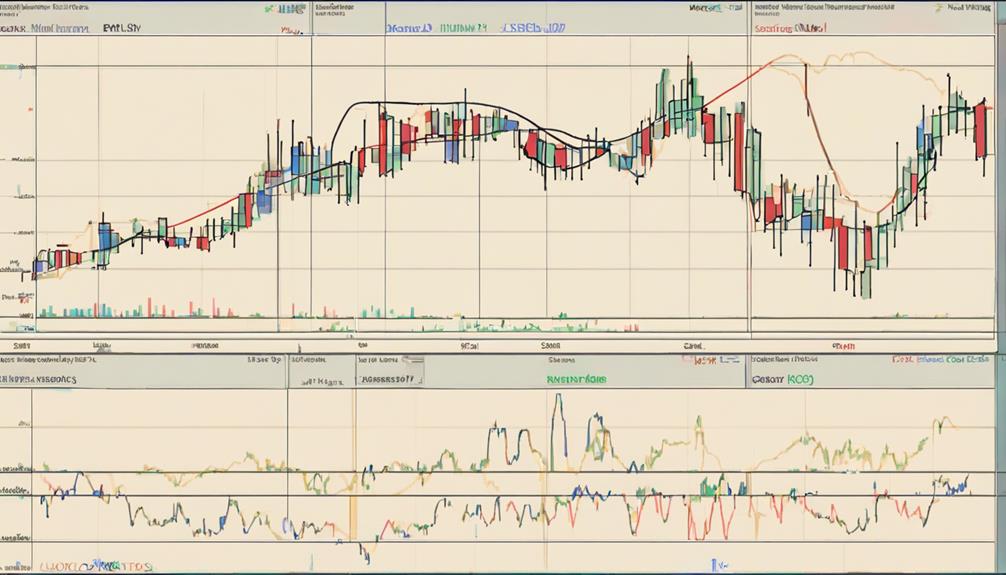
Expanding on the importance of momentum indicators in improving trading strategies, a thorough understanding of the different types of these indicators is essential for traders looking to effectively analyze market dynamics.
Popular momentum trading indicators include the Relative Strength Index (RSI), Moving Average Convergence Divergence (MACD), and Stochastic Oscillator. The RSI is valuable for identifying overbought and oversold conditions, signaling potential reversals in the market.
On the other hand, the MACD offers insights into trend-following opportunities by evaluating the relationship between two moving averages. Additionally, the Stochastic Oscillator aids traders in recognizing possible trend reversals and confirming the current market momentum.
Integrating Momentum Indicators
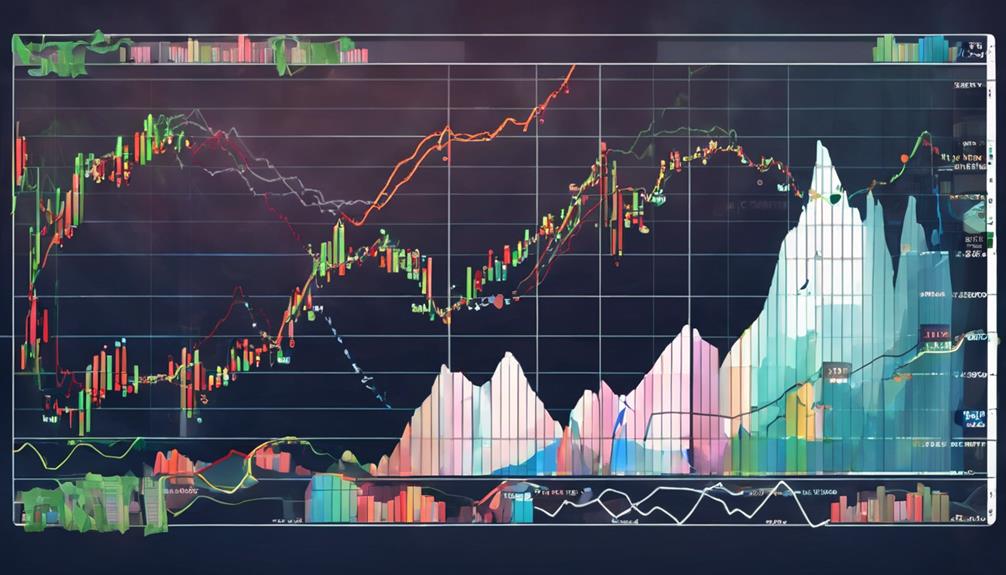
When integrating momentum indicators into trading strategies, selecting the right indicators and interpreting them accurately are essential for making informed decisions.
Traders should consider the specific characteristics of each indicator, such as RSI for identifying overbought or oversold conditions and MACD for trend-following signals.
Indicator Selection Tips
To enhance the effectiveness of your trading strategy, judiciously incorporating momentum indicators such as RSI and MACD can provide valuable insights for making well-informed decisions in the financial markets.
These technical analysis tools help traders identify potential entry and exit points, assess the strength of a trend, and recognize overbought or oversold conditions. RSI aids in pinpointing extreme market conditions, guiding trading decisions based on these levels.
On the other hand, MACD offers signals that follow trends, helping traders ride profitable trends effectively. By integrating these momentum indicators into your trading approach, you can better understand market trends and improve the timing of your trades, enhancing the overall performance of your strategy.
Interpretation Techniques
Integrating momentum indicators into trading strategies greatly enhances the ability to identify critical entry and exit points with precision, aiding in making informed decisions in the financial markets. By incorporating indicators like the Relative Strength Index (RSI) for overbought and oversold signals, traders can improve their trading decisions based on momentum.
Additionally, utilizing the Moving Average Convergence Divergence (MACD) can assist in recognizing potential trend reversals and gaining insights into market trends. Understanding the overall strength of the market and being able to pinpoint entry and exit points accurately are essential aspects of successful trading strategies.
Entry and Exit Point Precision
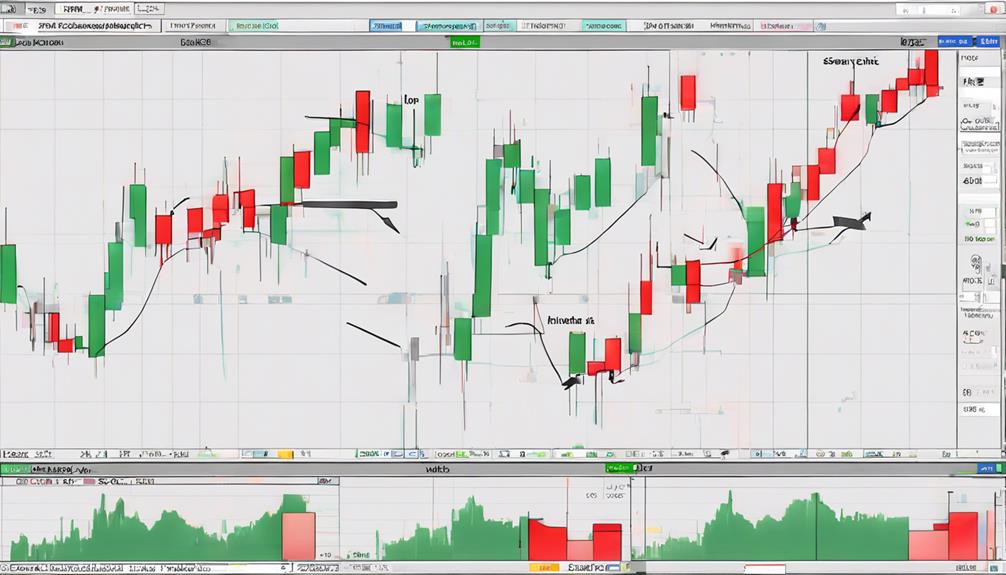
Precision in selecting entry and exit points is vital in trading, as it directly impacts profitability. By utilizing momentum indicators, traders can identify ideal moments to enter and exit positions with enhanced accuracy.
This precision is key in maximizing gains and minimizing losses in the dynamic financial markets.
Timing for Market Entry
Enhancing trading strategy effectiveness and profitability hinges on mastering the precision of market entry and exit points through the strategic utilization of momentum indicators. Timing for market entry with momentum indicators allows traders to pinpoint precise entry and exit points, maximizing profits by entering and exiting trades at ideal times.
Precision in entry and exit points is essential for enhancing trading strategy effectiveness. Momentum indicators offer clear signals for timing trades, reducing guesswork and increasing accuracy. By incorporating momentum indicators into market entry timing, traders can greatly enhance their trading performance and success rate.
This strategic approach guarantees that traders are well-positioned to capitalize on market movements, ultimately leading to improved profitability and overall trading outcomes.
Exit Strategy Importance
Mastering the timing of market exits is a vital aspect of maximizing profits and managing risks effectively in momentum trading strategies. An exit strategy is essential for establishing precise entry and exit points to lock in gains and mitigate risks.
By incorporating momentum indicators into exit strategies, traders can enhance their trading discipline and improve decision-making processes. This approach helps traders avoid emotional trading and stay focused on their predetermined exit points.
Utilizing effective exit strategies based on momentum indicators can greatly enhance overall trading performance and consistency, ensuring that traders optimize their profitability while effectively managing risks in the market.
Validating Price Trends
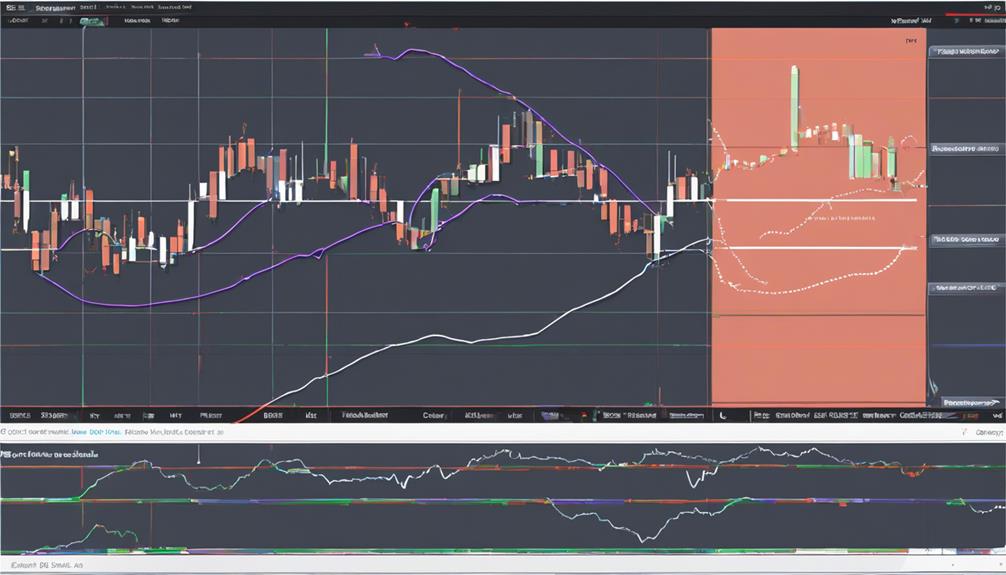
Validating price trends is an essential aspect of trading strategy analysis, as it confirms the strength and sustainability of market movements. Momentum indicators play a vital role in this validation process by objectively evaluating the direction and intensity of price trends. These indicators help traders distinguish between genuine trend movements and false signals, enabling more informed decision-making.
Additionally, by analyzing price momentum, traders can anticipate potential trend reversals and identify when a trend may be losing strength. Utilizing momentum indicators not only enhances the precision of entry and exit points but also contributes to improved risk management strategies. By incorporating these indicators into their analysis, traders can better navigate the dynamic nature of the market and increase the probability of successful trades.
Identifying Market Reversals
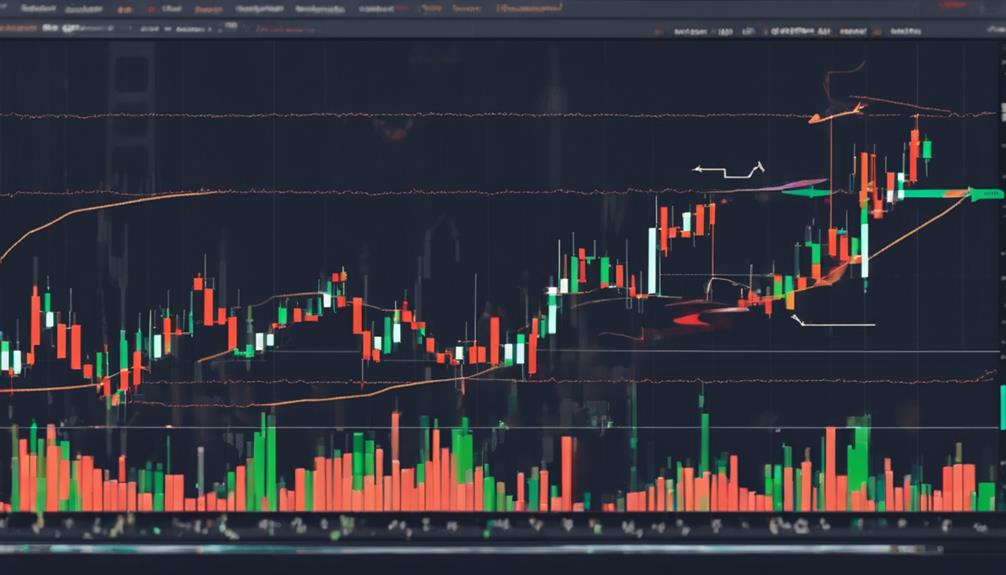
Market reversals, a pivotal aspect of trading analysis, can be effectively identified through the strategic utilization of momentum indicators such as the Relative Strength Index (RSI) and Moving Average Convergence Divergence (MACD). These indicators play a vital role in helping traders spot potential changes in market direction by analyzing the speed and strength of price movements.
By detecting overbought or oversold conditions, traders can anticipate reversals and adjust their positions accordingly. Momentum indicators provide clear signals when market sentiment shifts, allowing traders to take advantage of new trends and adjust their trading strategies accordingly.
Understanding market reversals is essential for maximizing profits and minimizing losses, especially in strategies based on momentum indicators. Traders who can accurately identify these reversals stand to benefit from being able to enter or exit positions at optimal points, enhancing the overall effectiveness of their trading approach.
Backtesting Your Strategy
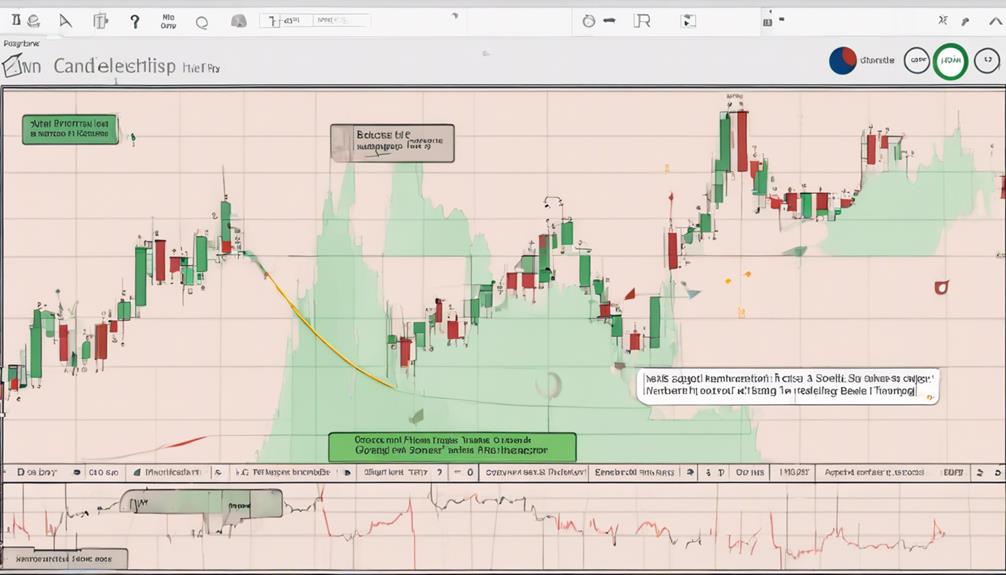
Conducting thorough backtesting of a trading strategy is crucial for evaluating its historical performance and potential profitability across varying market conditions. When backtesting a trading strategy, traders should consider the following key points:
- Utilize historical data: Guarantee the historical data used in the backtesting process is accurate and detailed to provide meaningful insights into the strategy's performance.
- Account for trading costs: Factor in trading costs such as spreads, commissions, and slippage to obtain a realistic assessment of the strategy's profitability.
- Utilize software platforms: Use specialized software platforms to backtest trading strategies efficiently and effectively before deploying them in live trading.
- Refine strategies: Analyze the results of backtesting to identify strengths and weaknesses in the trading strategy, allowing for adjustments and refinements to enhance future performance.
Staying Informed on Market News

Staying informed on market news is essential for traders to understand the latest economic developments and announcements that could influence their investments.
By staying updated on market news, traders can better predict shifts in the market and adapt their trading strategies accordingly.
Market news offers valuable insights into industry trends, company progressions, and geopolitical occurrences that can impact asset prices.
Market News Sources
Staying informed on updates from reputable financial news sources is crucial for traders seeking to stay abreast of market news. To guarantee you are well-informed, consider the following sources and strategies:
- Follow reputable financial news sources such as Bloomberg, CNBC, Reuters, and Financial Times.
- Monitor market news for updates on economic indicators, company earnings reports, and geopolitical events that can impact trading decisions.
- Utilize online platforms like MarketWatch, Investing.com, and Yahoo Finance for real-time market news and analysis.
- Subscribe to newsletters from financial institutions, research firms, and trading platforms to receive market insights and updates directly to your inbox.
Timely Information Updates
For traders seeking to make informed decisions in a dynamic market environment, staying abreast of timely market news updates is paramount. Being informed about economic indicators, regulatory changes, and sector-specific trends is essential for adjusting trading decisions and optimizing a momentum trading strategy.
Market news plays a significant role in understanding asset price fluctuations and anticipating market movements. By monitoring market news sources regularly, traders can gain valuable insights into global economic conditions and company performance, enabling them to stay ahead in the trading game.
This information equips traders with the necessary tools to react swiftly to changing market dynamics and make well-informed decisions that align with their trading goals and risk tolerance levels.
Adjusting Indicator Settings
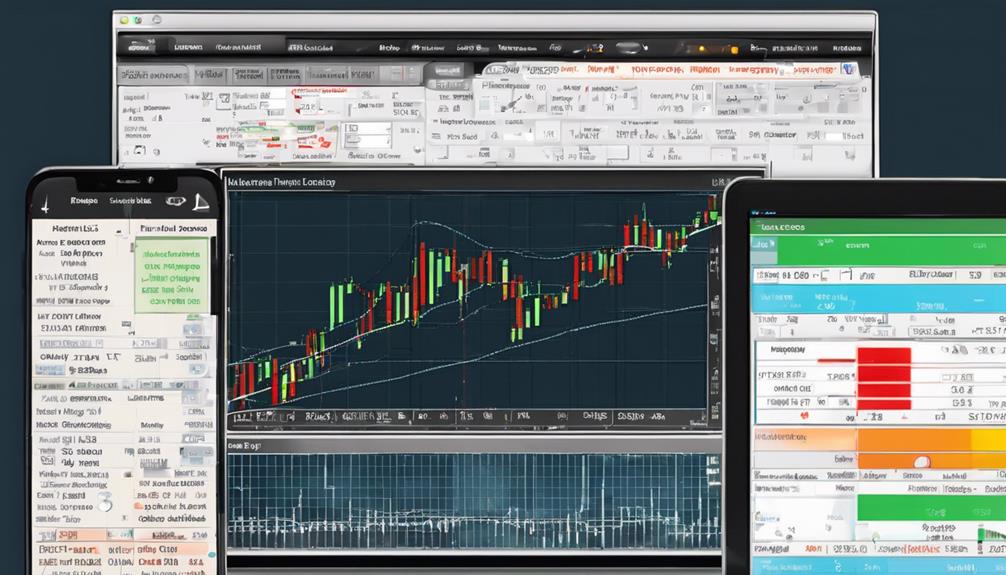
Fine-tuning indicator settings is an essential step in optimizing the sensitivity and accuracy of momentum indicators for varying market conditions. To enhance the effectiveness of momentum indicators such as the Relative Strength Index (RSI), traders can adjust indicator settings by:
- Modifying parameters like lookback periods to improve the accuracy of momentum signals.
- Tweaking indicator settings to reduce false signals and enhance the timing of entry and exit points.
- Adapting indicator parameters to different timeframes to optimize trend identification.
- Experimenting with indicator settings to align them with specific trading strategies and preferences.
Optimizing Strategy With Historical Data
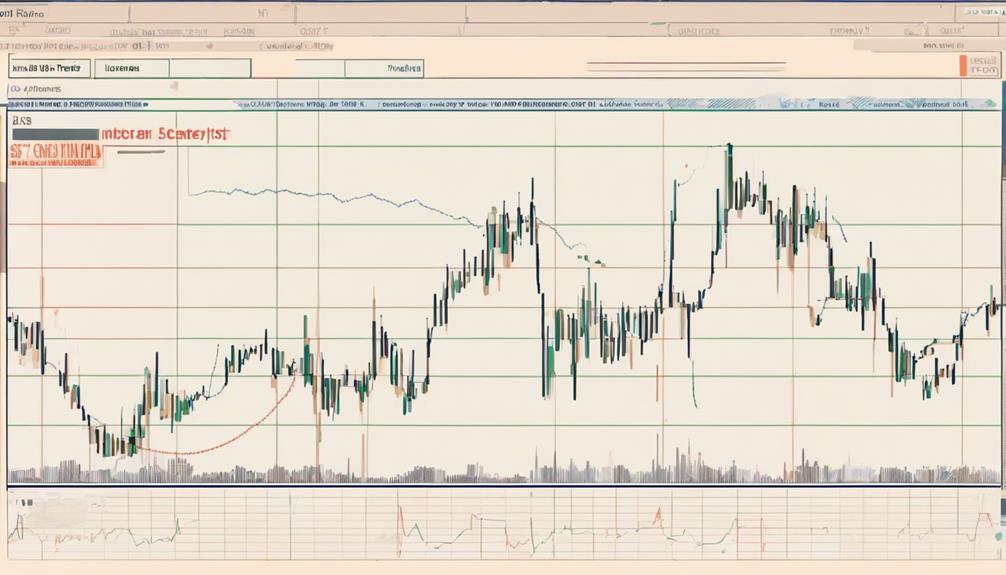
How can the analysis of historical data contribute to the optimization of trading strategies through the utilization of momentum indicators? Backtesting historical data plays an essential role in validating the efficacy of momentum indicators within a trading strategy. By studying past market trends through historical data, traders can enhance the selection and parameterization of momentum indicators such as the Relative Strength Index (RSI) and Stochastic. This process enables traders to fine-tune their entry and exit points based on the performance of these indicators, ultimately improving the strategy's overall effectiveness. Additionally, examining how these indicators would have fared in historical scenarios allows traders to make necessary adjustments to enhance future outcomes. Historical data also provides valuable insights into the reliability and consistency of momentum indicators over time.
| Aspect | Importance | Benefit |
|---|---|---|
| Backtesting | Validates strategy | Ensures indicator effectiveness |
| Market Trends | Optimizes indicator choice | Enhances trading strategy |
| Entry/Exit Points | Precision in trading | Improves decision-making |
Improving Trading Outcomes
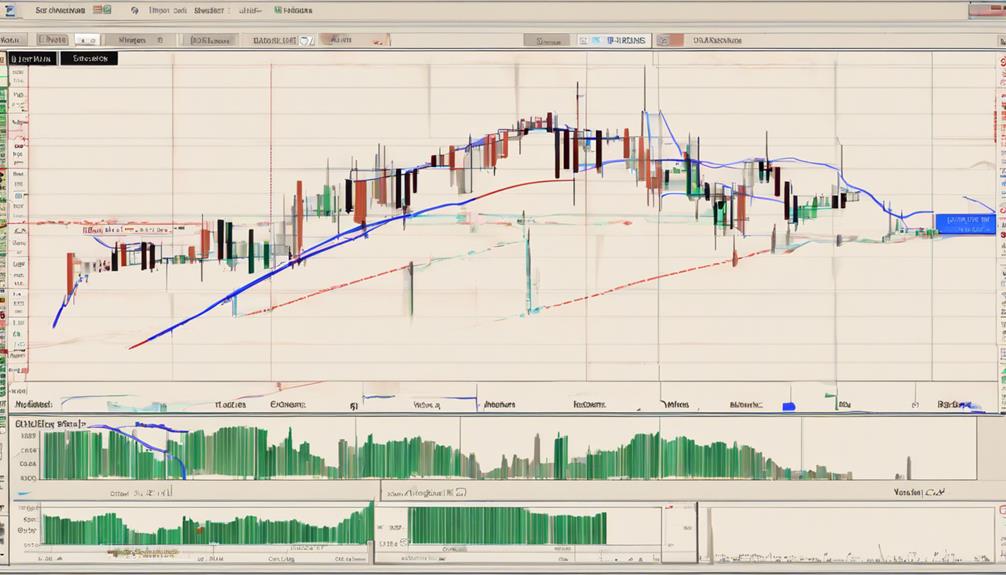
Analyzing the insights gained from utilizing momentum indicators within trading strategies can greatly enhance overall trading outcomes. When looking to improve trading outcomes, traders can consider the following strategies:
- Utilize momentum indicators like the Relative Strength Index (RSI) to pinpoint potential entry and exit points more accurately.
- Incorporate indicators such as RSI to identify early signs of trend reversals, enabling traders to adjust their positions promptly.
- Assess the market strength using momentum indicators like RSI to make more informed trading decisions based on the prevailing market conditions.
- Integrate indicators like the Moving Average Convergence Divergence (MACD) to receive trend-following signals that align with the market direction, aiding in optimizing trading outcomes.
Frequently Asked Questions
How to Use Momentum Indicator to Trade?
Momentum signals are essential for traders looking to capitalize on market trends. They aid in confirming trend direction, identifying entry and exit points, and managing risk effectively.
By incorporating volatility analysis and backtesting results, traders can fine-tune their strategies to suit prevailing market conditions. Additionally, comparing different timeframes can provide valuable insights for optimizing trading decisions.
Utilizing momentum indicators in this manner enhances the precision and efficacy of trading strategies.
What Is the Most Effective Momentum Indicator?
The most effective momentum indicator is often subjective and depends on the specific trading strategy and market conditions. Traders commonly find the Relative Strength Index (RSI) useful for identifying overbought and oversold levels, while the Moving Average Convergence Divergence (MACD) can offer valuable insights into trend changes.
Incorporating a combination of indicators such as double crosses, breakout signals, and trend confirmation can enhance trading performance, along with employing risk management strategies and setting clear entry and exit points.
Do Momentum Trading Strategies Work?
Momentum trading strategies have shown efficacy in capturing short-term price trends, supported by historical performance and backtesting results. Success hinges on market conditions, risk management, entry signals, exit strategies, trend identification, timeframe selection, and adjustment techniques.
Traders benefit from incorporating momentum indicators to enhance strategy performance. The data-driven approach of momentum strategies underscores their viability in generating profits, with the caveat that proper implementation and adaptation to market dynamics are vital for success.
How Do You Create a Momentum Trading Strategy?
When developing a momentum trading strategy, it is vital to focus on identifying entry points and exit signals based on momentum indicators like RSI or MACD.
Implementing effective risk management techniques, such as setting stop-loss orders and proper position sizing, is essential to mitigate potential losses.
Additionally, confirming trends, analyzing volatility, selecting appropriate timeframes, and regularly backtesting results to adapt to changing market conditions are key components of a successful momentum trading strategy.
Conclusion
In summary, momentum indicators play a vital role in enhancing trading strategies by providing valuable insights into market trends and potential entry and exit points.
By integrating these indicators effectively, traders can improve their decision-making process and increase their chances of success.
Staying informed on market news, adjusting indicator settings, and optimizing strategies with historical data are key steps in maximizing trading outcomes.
Remember, in the world of trading, knowledge is power.


